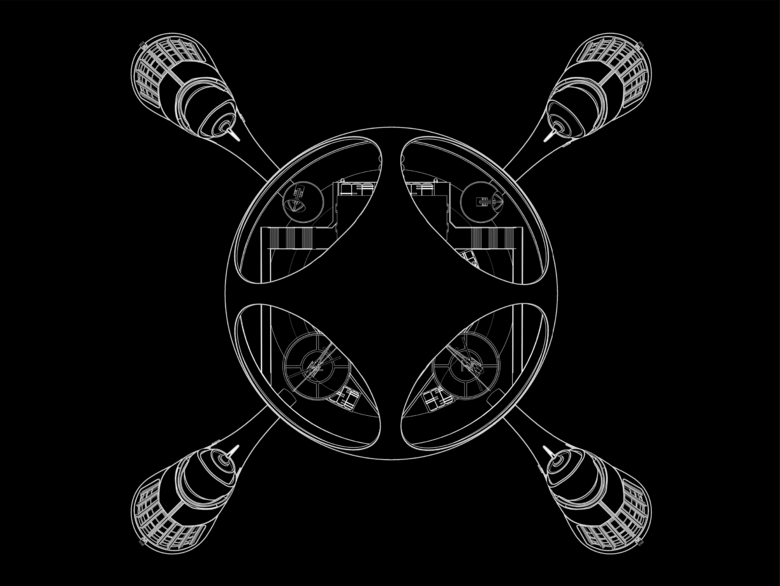Drawing Atlantis – and Other Lairs of Evil Villains
Lair: Radical Homes and Hideouts of Movie Villains, a new book by architect Chad Oppenheim, is an extremely fun romp through fifteen films that are united by the incredible lairs of their bad guys, and are beautifully depicted through highly detailed architectural illustrations.
With silver ink on black paper, the book is visually stunning but also carefully aligned with its theme: evil people in film and the places where they live and ... work isn't the right word ... mastermind their evil plans. Published this week by Tra Publishing, which recently put out a monograph on Chad Oppenheim and his Miami- and Muttenz-based practices, the book is a visual feast that should appeal to both fans of cinema and of architecture – and the many, like myself, who love both.
The links between architecture and film are clear, so it's not necessary to delve into them here; but focusing on a very particular niche in Hollywood movies makes for a tightly focused book that is also tightly structured, with each of the fifteen films described in terms of their story, villain, and villain's lair. Aiding these descriptions are architectural illustrations and renderings by architect-turned-film professional Carlos Fueyo of playard studios. Below are a few highlights of Fueyo's images from the book, which moves from the early James Bond films that arguably started the trend of evil lairs to such recent films as Ex Machina.

Lair: Radical Homes and Hideouts of Movie Villains
Chad Oppenheim, Andrea Gollin (Editors)
Carlos Fueyo (Illustrations)
9.2 x 13 in.
296 Páginas
Hardcover
ISBN 9781732297869
Tra Publishing
Purchase this book






